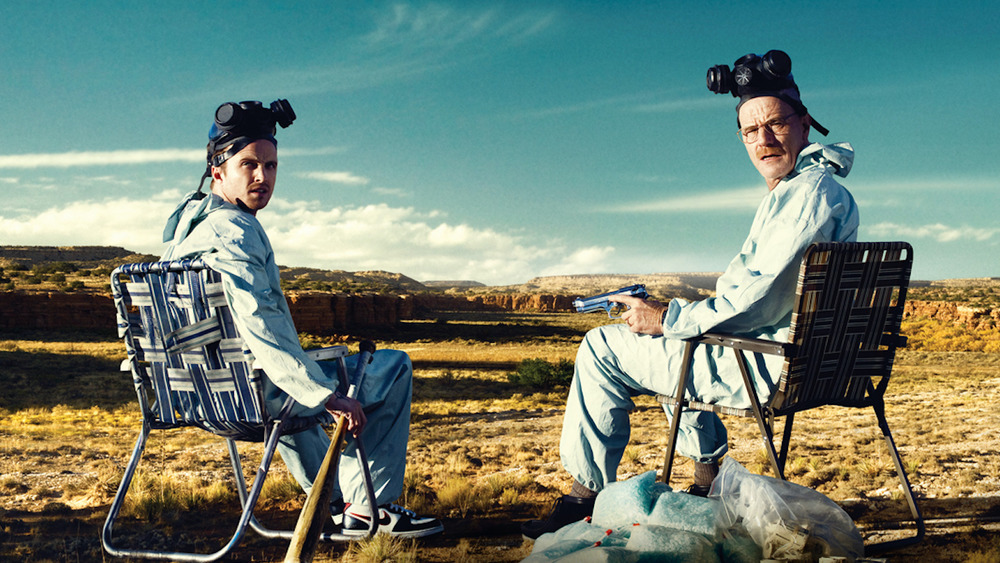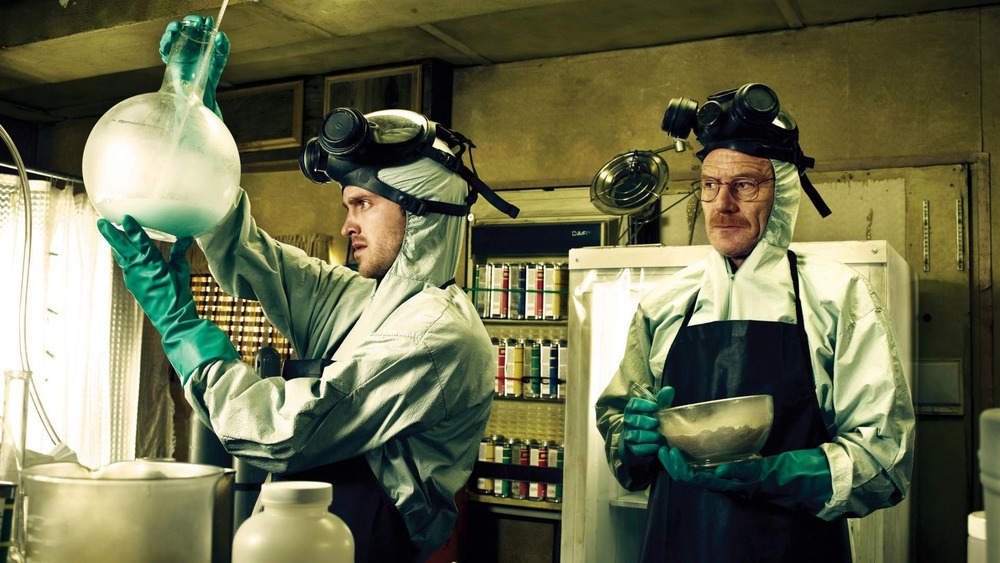Why Breaking Bad's Blue Sky Makes No Sense
The term "iconic" gets tossed about quite a bit these days, in reference to one television program or another, but the hard truth of the matter is not many shows actually live up to that billing. In fact, in the past two decades or so, only a handful can legitimately lay claim to the word — and chief among them is AMC's masterful crime drama Breaking Bad. Set largely amid the scorched-Earth vistas of Albuquerque, New Mexico, the series charts the astonishing transformation of high school chemistry teacher Walter White (Bryan Cranston) into the key figure in a massive methamphetamine empire before exploring his soul-crushingly inevitable downfall. From that setup, series creator Vince Gilligan managed to assemble 62-episodes of near flawless dramatic television that continue to rank Breaking Bad at the top of many "Best TV Show" lists.
That's not too shabby, for a show that's been off the air for over seven years. But even in its absence, the legacy of Breaking Bad continues to grow, with fans old and new adding the "iconic" label to everything from Cranston's towering performance as Walter to the series' twangy theme music. Heck, even the pork pie hat Cranston wore as his character's alter ego, "Heisenberg," has been called iconic.
As it happens, the series' symbolic use of color is frequently mentioned when discussing the iconic elements that formed Breaking Bad. While greens, yellows, and whites are signature colors throughout, blue is the one most frequently overlooked — this, in spite of the fact that it's the color of Walt's signature "Blue Sky" meth.
Nonetheless, blue is repeatedly used in Breaking Bad to signify both loyalty and purity. However, despite Walt's argument that his signature cook is blue because it's the purest out there, science simply does not support such a claim.
Turns out there's zero science to support the color of Walter's famed blue meth
Over the years, Breaking Bad has often been noted for both its authenticity, in particular with its depiction of manufacturing methamphetamine. But according to Breaking Bad's science adviser Dr. Donna Nelson, Gilligan drew a line in the New Mexico sand when it came to the science of Walt's blue product. Chiefly, Nelson is adamant that Walt's purity claims about "Blue Sky" make no sense, because pure meth would, inherently, be white.
In a recent chat with Showbiz Cheat Sheet, Dr. Nelson went on record stating that she specifically advised Vince Gilligan not to make Walt's "Blue Sky" blue at all: "On one of my set visits, Vince came to me and said, 'What do you think about making the meth blue?' And I said, 'I wouldn't do it.'"
From there, Dr. Nelson described a hilarious behind-the-scenes back-and-forth, making it clear Gilligan was probably too attached to the pure blue meth concept to change his mind by the time he consulted his advisor. In her words, "He said, 'Well, wouldn't there be some reason if it was pure that it might be blue? You know, a little bit blue.' And I said, 'No, because meth is white.' And he said, 'Well, what if it's pure?' And I said, 'Then it'll be white.' And he said, 'What if it's really, really, really pure?' And I said, 'Then it'll be really, really, really white.'"
In the end, Gilligan chose to eschew the science of meth for aesthetic purposes. And in all honesty, the world should be A-okay with the choice, because at this point, it's hard to imagine Breaking Bad without, "the blue stuff." Sure, it cost the show some credibility in the eyes of science, but it undoubtedly helped make for iconic television.

